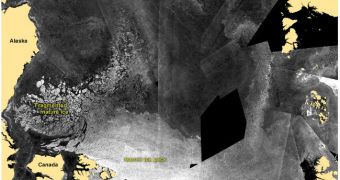A group of investigators from the American space agency announces the results of a new study conducted over the Arctic, which finally shows just how much new and multi-layer ice is lost in the region on account of melting every year.
Such studies are very important because they provide a deeper insight into how climate change is affecting the poles, and also because their conclusions allow us to modify atmospheric model to better suit reality.
Additionally, scientists may also become better equipped to determine when the North Pole will be entirely free of ice during the summer. The melting trend that has been affecting the area for decades shows no signs of abating.
One of the most important aspects of studying the Arctic that researchers identified is related to understanding the differences between how much new ice is lost, and how much of the old stuff goes.
The rate at which new ice – deposited over the course of a season – becomes permanent is critical for understanding the Arctic. If more ice freezes, and endures until the following season, then the trend shows cooling.
But the Arctic is unfortunately losing multi-layered, old ice at an alarmingly-high rate, and new ice that freezes during the cold season is not enough to compensate for the loss. Older ices are also more stable.
The experts in charge of the new investigation, Ron Kwok and Glenn Cunningham, say that old ices have been disappearing from the Arctic since satellite measurements of the area began in 1979.
In a new paper, the NASA Jet Propulsion Laboratory scientists use satellite data to understand how much of the multi-layer ice is melting away, versus how much of it is being “exported.”
This is a phenomenon that has been observed at the North Pole, in which strong winds push ices out of the Arctic Basin. Its exact influence on how much ice is lost in a year has never been quantified before.
In their research, the experts show that more than 1,400 cubic kilometers (336 cubic miles) of ice were lost from the Arctic due to melting between 1993 and 2009 alone.
“The paper shows that there is indeed melt of old ice within the Arctic basin and the melt area has been increasing over the past several years,” Kwok explains.
“The story is always more complicated – there is melt as well as export – but this is another step in calculating the mass and area balance of the Arctic ice cover,” he goes on to say.
The group published additional details of its discovery in the October 2010 issue of the esteemed scientific journal Geophysical Research Letters.

 14 DAY TRIAL //
14 DAY TRIAL //